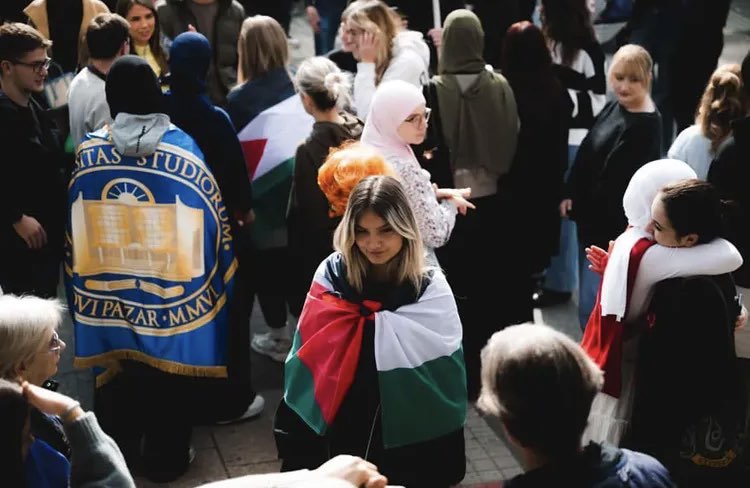On November 1, 2025, approximately 100,000 people from across Serbia converged in Novi Sad to mark one year since the canopy collapse that killed 16 people and sparked an unprecedented wave of protests that have continued for the past twelve months. The anniversary represented both a commemoration and a renewed call for justice for those killed.
Students made up a large share of those present, many of whom had walked for days along public roads and through dozens of towns to reach the city. A group from Novi Pazar, in the southwest, covered around 350 kilometers on foot over 16 days. Their journey symbolized, for many, the hope and determination the movement has inspired across the country. Along the way, they passed through localities including Kraljevo, Čačak, Valjevo, and Belgrade, receiving warm welcomes everywhere. “In every city, the people organized a welcome for the students, residents hosted them overnight, and cars joined them to accompany and protect them,” the media outlet Mašina reported.

Students from Novi Pazar ahead of departure to Novi Sad, October 2025. Students from State University in Novi Pazar rallied around Palestine solidarity demands throughout their mobilization. Source: Blokada DNUP/Instagram
Over the past year, similar student marches have taken place in all parts of Serbia, reaching communities long excluded from political life. Students also organized a wave of university occupations, covering nearly all major institutions, and remained steadfast in their demands for justice and accountability despite well-documented violence, both institutional and physical. Many were arrested and detained – either held in prison or put under house arrest – for months, while others were assaulted near local offices of the Serbian Progressive Party (SNS).
Throughout this period, demonstrators faced police violence and harassment from SNS-sanctioned counterprotests, yet the mobilization did not diminish. Protesters continued to insist that President Aleksandar Vučić and government officials meet their original demands from late 2024: ensuring accountability for the Novi Sad collapse and subsequent attacks on protesters, dropping charges against students and activists, and increasing public funding for higher education. When none of these were met, the list of demands expanded in mid-2025 to include snap elections for the sake of respecting and upholding democratic processes and institutions.
With these demands still unaddressed and more threats to public goods looming – including extractive projects led by multinational Rio Tinto and the destruction of historical landmarks for real estate development purposes – the protests show no signs of ending. Instead, the movement has inspired actions both locally and internationally. On November 1, commemorative and solidarity events were held not only across former Yugoslav republics but also in several EU countries, the United States, Australia, and New Zealand, emphasizing the overall importance of recent events in Serbia.
The post One year after Novi Sad train station collapse in Serbia, demands for justice continue appeared first on Peoples Dispatch.
From Peoples Dispatch via this RSS feed


